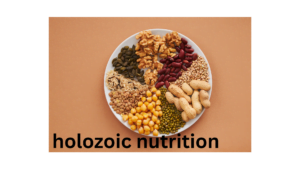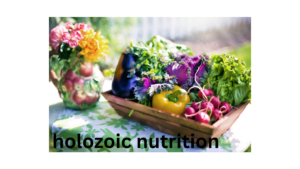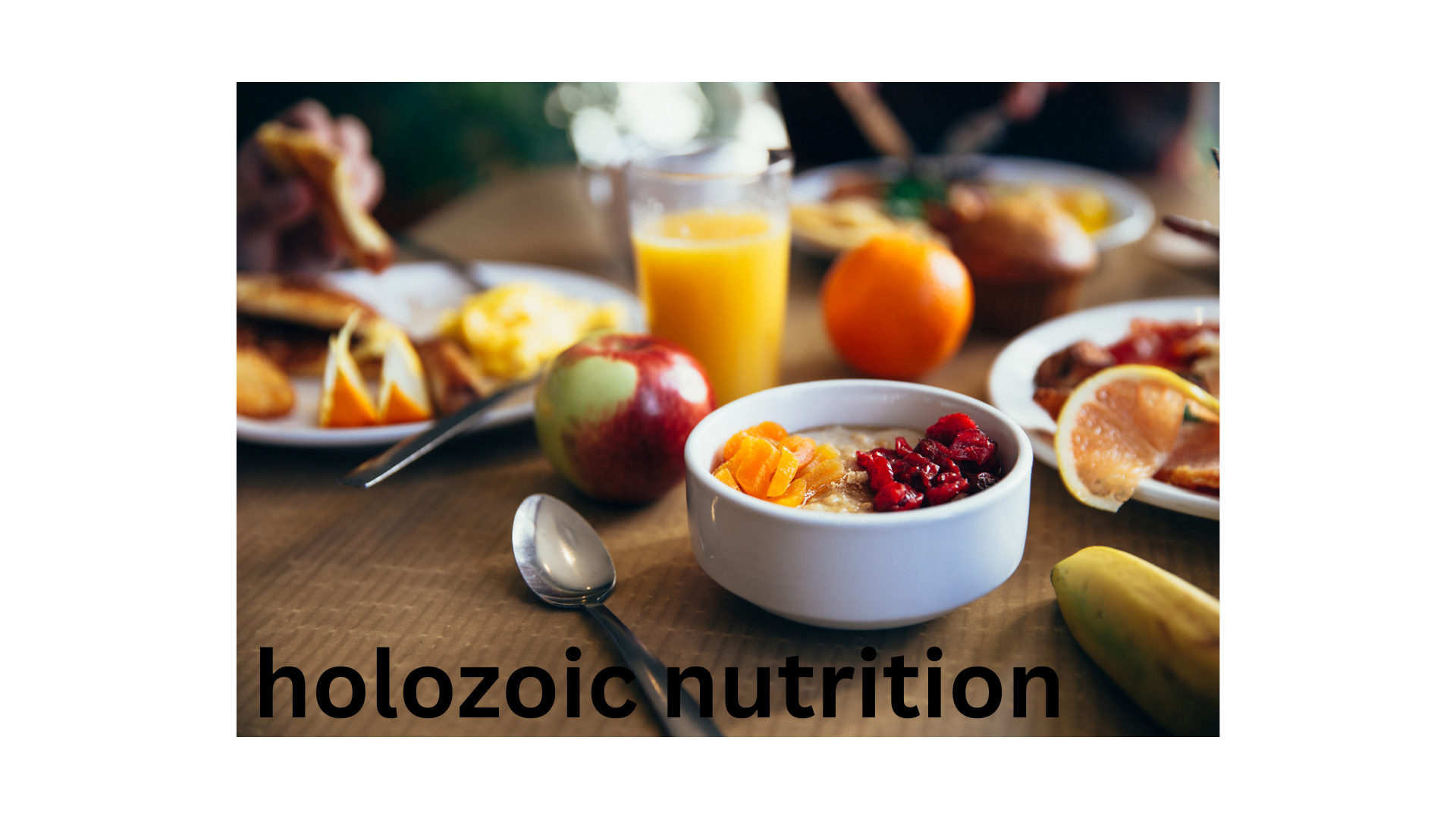Title: Exploring the fascinating world of Holozoic nutrition: A closer look at how animals eat Nutrition is a fundamental aspect of life, which is essential for the growth, development and sustenance of all living organisms. While plants use energy through photosynthesis, animals have evolved various dietary mechanisms to obtain essential nutrients. An interesting approach is holozoic nutrition, a process that involves ingesting and digesting complex organic matter for energy and nutrients. In this article, we will delve into the fascinating world of Holozoic nutrition and explore how animals use this feeding strategy.



Understanding Holozoic Nutrition:
Holozoic nutrition is a type of heterotrophic nutrition in which an organism consumes complex organic substances, such as other living or dead organisms, and breaks them down into simpler substances through digestion. This process allows animals to extract essential nutrients, including carbohydrates, proteins, fats, vitamins and minerals, which are important for their growth, energy and overall well-being.
Major components of Holozoic nutrition:
Ingestion:
Holozoic organisms usually have specialized structures or organs to capture food. For example, humans use the mouth to capture food, while predators may have specialized mouth organs such as beaks, claws, or jaws.
Digestion:
Digestion is a key step in Holozoic nutrition, where complex organic molecules are broken down into simpler, absorbable forms. This process can occur extracellularly in the digestive tract or intracellularly within specialized cells.
Absorption:
After digestion, nutrients are absorbed into the bloodstream or internal body fluids. This allows the organism to distribute these essential substances to different cells and tissues.
Mix:
Once absorbed, the nutrients are incorporated into the organism’s cells, contributing to growth, repair, and maintenance of bodily functions.
Removal:
- The remaining, undigested material is removed from the organism’s body through excretion. This step is essential to maintain the health and functionality of the digestive system.
Examples of Holozoic nutrition: carnivorous: Predatory animals like lions, tigers and eagles mainly depend on other animals for their nutrition. They have well-developed teeth and claws to capture and eat their prey.
Vegetarian: While herbivores primarily consume plant matter, their nutritional process can also be considered Holozoic. Herbivores such as cows, deer, and elephants have specialized digestive systems to break down complex plant fibers, such as many stomach components. Omnivores: Humans, as omnivores, exhibit holozoic nutrition by consuming a diverse diet that includes both plant and animal sources. Our digestive system is adapted to process a wide variety of foods.
conclusion: Holozoic nutrition highlights the incredible diversity of feeding strategies that have evolved across the animal kingdom. The ability to swallow, digest, and absorb nutrients from a variety of sources has played a vital role in the survival and adaptation of countless species, from specialized predators to herbivorous animals with complex digestive systems. By understanding Holozoic nutrition, we gain insight into the complex web of life and the variety of ways organisms have evolved to meet their nutritional needs in the dynamic ecosystems they inhabit.
All About PAHAL Nutrition
- Title: Initiative Unveiling the Power of Nutrition: Nourishing Your Body, Nourishing Your Wellbeing Introduction:
In the fast-paced world we live in, it is extremely important to maintain a healthy and balanced lifestyle. Nutrition plays an important role in achieving and maintaining overall well-being. In recent times, Pahal Nutrition has emerged as an icon of health, providing individuals with a holistic approach to nutrition and vitality.
Essence of Initiative Nutrition:
Inherent in nature:
Initiative Nutrition is based on the belief that the best nutrition comes from nature. The brand emphasizes the use of nutritious, natural ingredients to create products that not only taste good but also contribute to optimal health. From organic fruits and vegetables to whole grains, Pahal Nutrition strives to harness the goodness of nature.
tailored for you:
One size does not fit all when it comes to nutrition. Pahal understands the uniqueness of each individual and tailors its products to meet diverse dietary needs. Whether you’re an athlete looking for performance-enhancing supplements or looking for a plant-based, nutrient-dense diet, Initiative Nutrition has a solution tailored just for you.
Initiative Nutrition Products:
Protein Powerhouse:
Initiative’s line of protein supplements is designed to fuel your muscles and support overall strength. From whey protein for fitness enthusiasts to plant-based options for those leading a vegetarian lifestyle, Pahal ensures that you get the protein that your body needs.
Superfood Blend:
Superfoods are nutritional powerhouses and Pahal incorporates them seamlessly into its products. Whether it’s a smoothie mix or an energy bar, expect plenty of nutrients from ingredients like chia seeds, spirulina, and goji berries.
Mindful Snacking:
Snacking can be a pitfall for many people looking for a healthy lifestyle. Pahal Nutrition addresses this by offering a range of snacks that are not only delicious but also keep the nutritional content in mind. From nutrient-rich trail mixes to guilt-free protein bars, the initiative makes snacking a health-conscious pleasure.
Initiative Promise:
Quality Assurance:
Pahal Nutrition takes pride in maintaining the highest standards of quality. Each product undergoes rigorous testing to ensure that it meets the brand’s commitment to excellence. This dedication to quality gives consumers confidence that they are providing their bodies with the best energy possible.
Educational Initiatives:
The initiative goes beyond just providing products; It attempts to educate consumers about the importance of nutrition. Through informative blog posts, webinars and social media engagement, Pahal Nutrition serves as a guide, helping individuals make informed choices about their health.
conclusion:
Pahal Nutrition is not just a brand; It is a lifestyle choice that empowers individuals to take responsibility for their health. By combining the wisdom of nature with modern nutritional science, Pahal Nutrition has created a platform where everyone can begin the journey towards a healthier, happier life. So, if you are ready to embrace nutrition that matches your body and soul, Pahal Nutrition is your partner in this transformational journey.
Unleashing the Power of Big Muscle Nutrition:
Building bigger muscles requires more than lifting heavy weights in the gym. It is a holistic process that involves a combination of effective workouts, proper rest and perhaps most importantly, a well-structured nutrition plan. In this article, we’ll dive deep into the world of big muscle nutrition, exploring the key ingredients that can boost your gains and help you achieve the impressive physique you desire.
Protein: the basis of muscle growth
Protein is often referred to as the building block of muscle, and with good reason. It plays an important role in repairing and building muscle tissue after intense workouts. It is essential for individuals aiming to develop larger muscles to consume adequate amounts of high-quality protein sources such as lean meats, poultry, fish, eggs, dairy products, and plant-based options such as legumes and tofu. Aim for at least 1.6 to 2.2 grams of protein per kilogram of body weight to aid muscle growth.
Carbohydrates: energy for intense workouts
Carbohydrates are the body’s primary source of energy, making them essential for intense workout sessions. When striving for bigger muscle gains, it’s important to include complex carbohydrates like whole grains, brown rice, sweet potatoes and quinoa in your diet. These provide sustained energy levels and replenish glycogen stores, ensuring you have the stamina to power through tough training sessions.
Healthy Fats: Aid Hormonal Balance
While proteins and carbohydrates are important, healthy fats also play an important role in muscle growth. Fat is essential for hormone production, including testosterone, which is a major player in muscle development. Include sources of healthy fats like avocado, nuts, seeds and olive oil in your diet to promote hormonal balance and support muscle building processes.
Hydration: The overlooked key to muscle growth
Proper hydration is often underestimated in its effect on muscle growth. Water is involved in a variety of physiological processes including nutrient transport, temperature regulation, and waste elimination. Dehydration can hinder performance and recovery, so make sure you stay adequately hydrated by drinking plenty of water throughout the day. For those engaged in intense workouts, consider including electrolyte-rich beverages to replenish minerals lost through sweat.
Time Matters: Strategic Meal Planning
The timing of your meals can have a significant impact on muscle growth. Eating a balanced meal containing a mix of proteins and carbohydrates before and after a workout can increase muscle protein synthesis and replenish energy stores. Consider including a pre-workout snack and post-workout meal within a two-hour period around your exercise session to optimize nutrient absorption and recovery.
conclusion:
Gaining bigger muscles is more than just lifting weights – it requires a comprehensive approach that includes a strategic nutrition plan. By prioritizing protein intake, including complex carbohydrates and healthy fats, staying hydrated, and strategically timing your meals, you can provide your body with the essential nutrients it needs to maximize muscle growth. Remember, consistency is key, and a balanced diet tailored to your fitness goals is the foundation for unlocking the full potential of your big muscle nutrition.


et qui et illum iusto sit doloribus voluptatem. occaecati inventore incidunt sit aliquam sit dolore iste eum optio tenetur sit quo magni ratione minus eos.